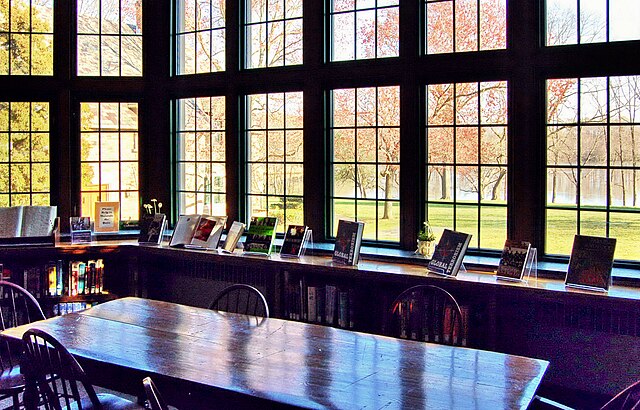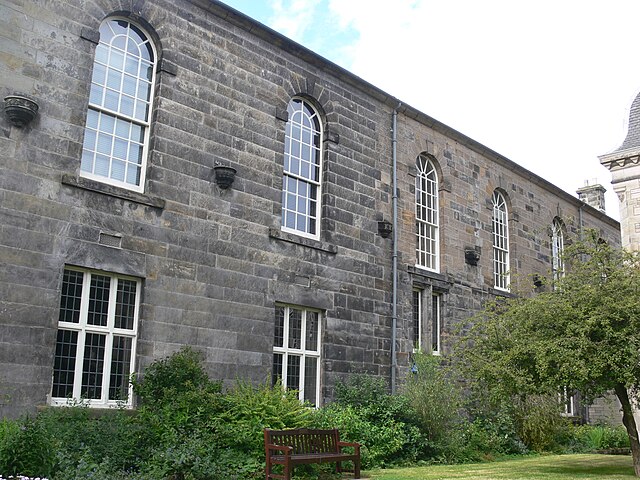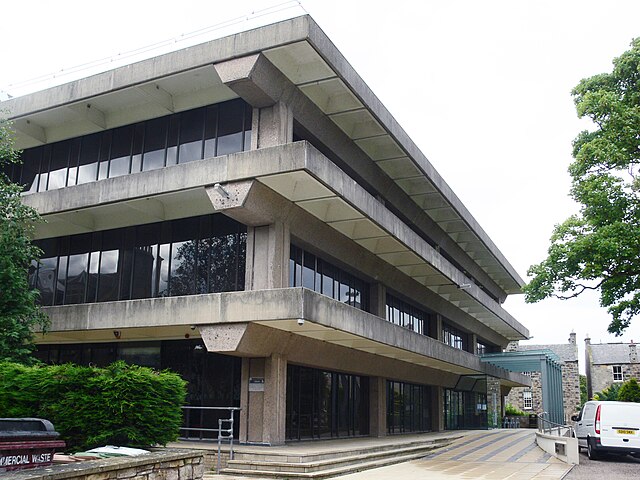
University of St Andrews Library, Scotland, United Kingdom
The University of St Andrews Library is based at The University of St Andrews, a public university in St Andrews, Fife, Scotland. It is the oldest university of Scotland and, after Oxford and Cambridge Universities, the third-oldest university in the United Kingdom and English-speaking world. The University of St Andrews was founded in the early 1400s.
Among the books in the Thammasat University Library collection associated with the University of St Andrews is Inaugural address delivered to the University of St. Andrews by the philosopherJohn Stuart Mill.
The University of St Andrews Library dates back to the early 1600s, but its books have been collected over some 600 years since the university was founded. It holds one of the most extensive collections of the research libraries in the United Kingdom with more than one million volumes.
In addition to 210,000 printed books in special collections, it has large manuscript and photographic collections while its archives date back to the early 1400s. The library’s current role is to support research, scholarship and learning with high-quality services backed by preservation, promotion and exploitation of its collections.
The student body represents over 145 nationalities with 45% of its population from countries outside the UK. About one-eighth of the students are from the EU and the remaining third are from overseas.
Among its alumni are Prince William, Duke of Cambridge, and Catherine, Duchess of Cambridge.
Thailand and the University of St Andrews Library
In 2012, the Special Collections division of The University of St Andrews Library reported on cataloguing efforts that uncovered a Royal gift to the University of St Andrews from the His Majesty King Rama V of Siam in 1896. According to the St Andrews Library website:
In 1893, King Chulalongkorn ordered the first printing ever of the Tipitaka (or, “the three baskets,” the Pali canon which forms the doctrinal foundation of Theravada Buddhism) which had previously only existed in manuscript form written on palm leaves. This canon was first composed in North India and was preserved and passed orally until it was first committed to writing around 29 BCE. It is traditionally believed by Theravadins that most of the Pali Canon originated from the Buddha and his immediate disciples. Because of the fragility of these palm-leaf manuscripts and the climate of Theravadin countries, most surviving manuscripts are only fragmentary and date from the 15th century or later. Chulalongkorn’s reign as King of Siam was marked by great steps forward in the modernization of his country, by progressive social reform and by the protection of his kingdom from Western colonialism. To mark the 25th anniversary of his coronation and fulfilling his royal role as protector of the Buddhist faith, Chulalongkorn had this set of the sacred Pali texts, totalling 39 volumes, printed in modern-typeface of the Siam script. These books were printed and bound in Bangkok, and then sent as royal gifts to 260 institutes across five continents in 1896…
In 1896, the University of St Andrews Library minutes record a donation of 39 volumes from Chulalongkorn and acknowledged that a letter of thanks should be sent. These volumes, because of their language, their script, or perhaps their nature, were left uncatalogued and unrecorded for over a hundred years, their significance was lost and their meaning forgotten. At some point this collection came under the care of the Department of Special Collections, and was labelled the “Thailand Collection” and there it has remained, untouched, until this summer. It was decided, then, that we should truly figure out what this mysterous set of books was, and so we posted a call for help in order to decipher the script and their nature, and to catalogue them properly. We advertised internally to any Thai-language student for a short, 20 hour project to help us with this task. Waranunt Pongpairoj was the first to reply to this ad, “I was pleasantly surprised that there were some Thai books in the university’s library because there are so few connections between Scotland and Thailand that I know of. What surprised me even more when I read through the email is the fact that the collection was a century-old royal gift from HRH King Rama V, the founder of my previous university [Chulalongkorn University].”
Work began in early June 2012 to identify these books, as Wara recounts her first day: “It was in the humidity-controlled room that I first met the collection of 39 books. After a quick examination, I knew that they are the Theravada Tripitaka and that intimidated me. Indeed, I have never in my life dealt with this kind of sacred texts … nevertheless, the opportunity was too good to let go. In fact, it is not often that you are a Thai student in a Scottish university in want of help for cataloguing some Thai books. Also, the fact that it was a royal gift for the university still dangled in my mind. Call me nosy, but I wanted to know the whole story. That being so, I gave in to my curiosity and signed the work contract, and I never regretted doing so.”
Wara quickly identified this set as the “Chulalongkorn Tipitaka”, and instantly the story became more interesting and, indeed, more serious. While Wara worked away at transcribing, transliterating and translating each title page, I began researching the history of this edition of the Tipitaka. I quickly found out that the Dhamma Society was set up in the mid-1990s to produce a Latin script Tipitaka and to fund and promote research of the Pali Tipitaka. This society has funded the research necessary in producing this new edition, but also has set up the International Tipitaka Hall at Chulalongkorn University, provided a digital facsimile of the 1893 edition and has funded bibliographic research in this area. In 2009, a project that tracked which countries recieved the 1893 Chulalongkorn Tipitaka was completed which resulted in a repository being set up for institutions to report their holdings, which we now have done. It was through this research that I found out that we are the first British institution to report our holdings to the World Tipitaka Repository, and the first to catalogue a full, extant set. There are portions of these sets recorded at the British Library, Oxford and Cambridge, but none are complete records, and, indeed, some of the institutions record only a brief holdings statement.
“The most fascinating part of this project has to be the fact that this set of books is part of the World’s first printed Tipitaka,” says Wara, “It was, indeed, the vision of the King that had made this happen. In my opinion, this action not only illustrates the revolution of the Siamese-Buddhist printing technology, but it also had strong political implications for my country. On the same year that this Tipitaka was printed, Thailand, then called the Kingdom of Siam, suffered from the inequitable treaty with France, resulting in Siam having to surrender the land on the upper left side of Mekhong river to the French government. It was during this period of land-war that Siam lost considerable amount of land possessions in order to secure its sovereignty, weakening the power of the kingdom. However, I believe that the fact that this Tipitaka had been printed signifies the exercise of power, not military but of education and technology, for the collection had been distributed to educational institutions, and not governments, all over the world. It is thus a privilege for me to be a part of the cataloguing of this collection. Despite the honour, I feel that my ignorance about my country and its history has made me unworthy of this task. Nevertheless, I resolved that it was never too late to do the research, so I did and I have now learnt a lot more about this version of the Tipitaka.”
Cataloguing of the Chulalongkorn Tipitaka has now been completed, and all of the records have been made available on the University of St Andrews online catalogue, SAULCAT. These records include a uniform title heading for each book of the Tipitaka, a Thai character transcription of the title page, a transliteration of the title page and an English translation of each book of the Tipitaka. They also include indexed headings for the editors and temples they were associated with, as well as full pagination descriptions and subject headings. These catalogue records will be uploaded to COPAC and WorldCAT and it is our hope that institutions which hold a set of these works can download these records and use them to provide access to this wonderful resource…
–DG & Waranunt Pongpairoj

(All images courtesy of Wikimedia Commons)


